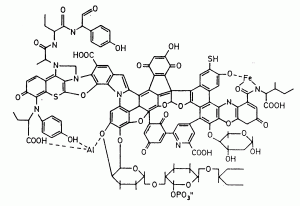Carbon sequestration has become a hot topic when talking about mitigating the effects of global warming. Carbon offset companies are big business, usually planting trees in exchange for fees collected from plane tickets and other greenhouse gas emitting activities.
These trees take approximately 10-17 years until they become a carbon sink. This is because the soil that these trees are planted in is releasing far more carbon than the trees are able to sequester. This release of carbon comes from the decomposition of organic matter by soil bacteria and fungi. As these soil microbes break down glucose, cellulose, lignin etc… into smaller, simpler molecules. If conditions are right (right microbes, temperature, pH…) these simple organic molecules can condense together to form a humic molecule, or, a complex difficult-to-decompose molecule.

The fact that these large, complex molecules are difficult to decompose, means that carbon is locked away anywhere from 10 to 100 years.
The composting process provides perfect conditions for the formation of humic molecules. It is plausible that composting may help reduce greenhouse gas emissions by creating humic molecules as well as mitigating the release of methane and nitrous oxide had the material been sent to the landfill.
These are just some preliminary thoughts which continue to bring to light just how beautifully complex the natural world can be.